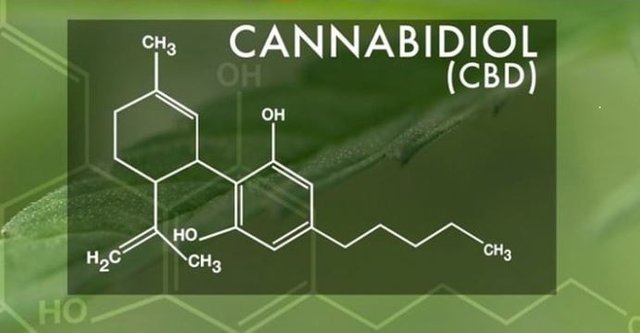Does CDB oil really help your body???

CBD oil is a mixture of phenolic, terpene compounds, phytocannabinoids, standardized for the content of cannabidiol (CBD 5%, 10%, 15%, 20%, 50%) with delta-9-THC content not greater than 0.2%. Sold as a dietary supplement, it is not herbal medicine. CBD oil is often falsified.
The price of CBD oil is not dictated by proven effectiveness in terms of security, but it is not defined as marketing, aimed at determining whether it is important when it is marked as CBD and heavy metal with highly specialized equipment (GC chromatograph) and extraction of CO2 SFE.
CBD in clinical trials (completed Phase III trials) in moderate efficacy (50-60% compared to 10-20% in surrogate mode) in the children's computer program (Dravet and Lennox-Gastronomy syndrome) scattered and used as an orphan drug (orphan medicine) ) in perinatal asphyxia. Besides, the unregulated use of CBD includes many different pathologies. Please note that CBD as a medicine is available in other treatment methods. diseases, not as an independent medicinal product.
Only for single, preclinical studies on lines (in vitro), animals (in vivo) and humans (small groups), indicating the potential benefit of CBD in disorders and psychiatric diseases, conductive syndromes, nicotine addiction, cancer, schizophrenia, disease Parkinson's, autoimmune diseases. However, in the case of CBD (100-1600 mg CBD / day vs. 10-20 mg/day), frequently used tests are used. This can mean that it can affect many metabolic processes and diseases. However, CBD is not classified as a dangerous substance even at a dose of 20-30 mg/kg m.c. In clinical trials, lack of appetite, diarrhea, irritability, drowsiness, impaired concentration, and changes was observed.
ATTENTION! CBD does not work like THC. While THC is an agonist of the CB1 and CB2 receptors, they are most compatible with endogenous cannabinoids, whereas CBD is a CB1 antagonist, CB2 inverse agonist, modulated allosteric opioid mi and delta receptor, adenosine, glycine and 5-HT1A receptor modulated receptor, FAAH inhibitor ( it prolongs the action of anandamide). It may even have the opposite effect on THC. Besides, it works on VR1 receptors (receptors for vanilloid), which has an analgesic effect. Unfortunately, in doses, they influence drug metabolism through P - 450 cytochrome, especially CYP2D6 and CYP3A4.
ATTENTION! Medical marijuana available in a pharmacy (cost about 65 zlotys per g) has a different form (herbal medicine - dried cannabis inflorescences) and contains about 19% THC: 1% CBD. It's principal THC, and not CBD is responsible for the healing effects of medical marijuana! The equivalent of THC (legal) is probably honokiol and magnolol, but available in the form of pure preparations.
Use CBD oil in many languages. Wonderful information about properties that are often inconsistent with a high bias risk.
Literature:
- NCBI. PubChem Compound Database
- Bisogno, T., et al., Molecular targets for cannabidiol and its synthetic analogs: effect on vanilloid VR1 receptors and on the cellular uptake and enzymatic hydrolysis of anandamide. British Journal of Pharmacology, 2001. 134(4): p. 845-852.
- Mechoulam, R. and L. Hanus, Cannabidiol: an overview of some chemical and pharmacological aspects. Part I: chemical aspects. Chem Phys Lipids, 2002. 121(1-2): p. 35-43.
- Russo, E.B., Cannabidiol Claims and Misconceptions. Trends in pharmacological sciences, 2017. 38(3): p. 198-201.
- Fasinu, P.S., et al., Current Status and Prospects for Cannabidiol Preparations as New Therapeutic Agents. Pharmacotherapy, 2016. 36(7): p. 781-96.
- Devinsky, O., et al., Cannabidiol: Pharmacology and potential therapeutic role in epilepsy and other neuropsychiatric disorders. Epilepsia, 2014. 55(6): p. 791-802.![CBD-oil.jpg]
- Devinsky, O., et al., Cannabidiol in patients with treatment-resistant epilepsy: an open-label interventional trial. The Lancet Neurology, 2016. 15(3): p. 270-278.
- Devinsky, O., et al., Trial of Cannabidiol for Drug-Resistant Seizures in the Dravet Syndrome. New England Journal of Medicine, 2017. 376(21): p. 2011-2020.
- Pisanti, S., et al., Cannabidiol: State of the art and new challenges for therapeutic applications. Pharmacol Ther, 2017. 175: p. 133-150.
- Cannabidiol (CBD). Pre-Review Report. Agenda Item 5.2. Geneva, 2017.